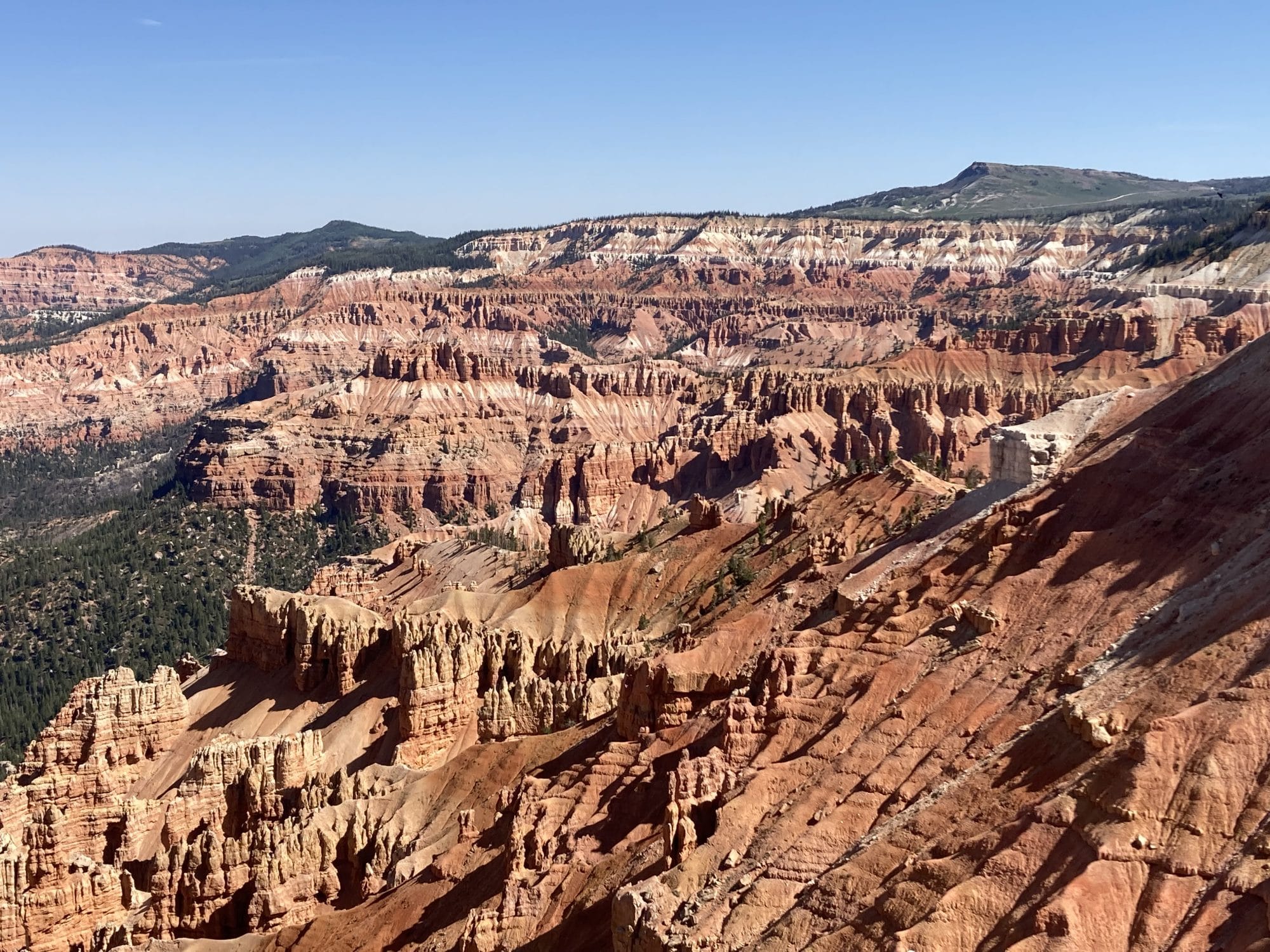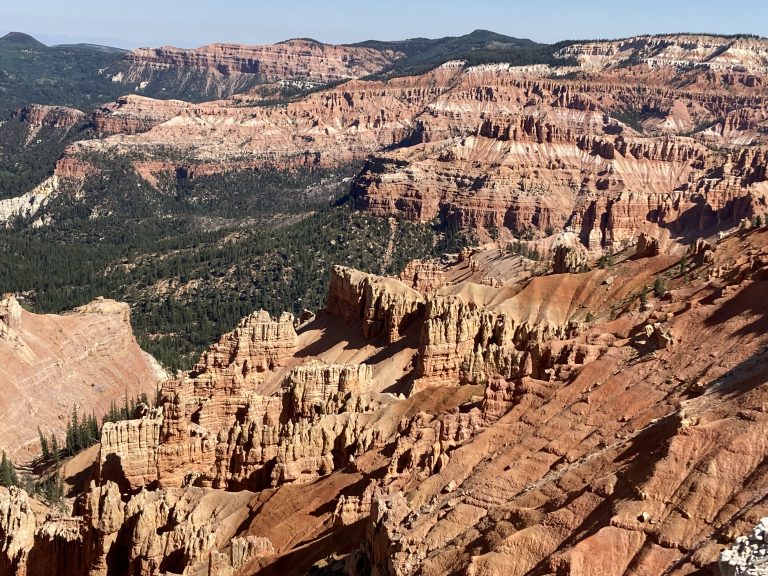
Located just east of Cedar City, Utah and at an altitude of 10,000 feet, Cedar Breaks National Monument is a terrific spot to stop if you are traveling along I-15 in southern Utah or spending a day at Zion or Bryce Canyon National Parks.
Perched at the top of the Grand Staircase, which ends at the Grand Canyon, Cedar Breaks National Monument is not one of Utah’s Mighty 5, but it’s definitely worth a stop. You can drive right up to the area called the amphitheater, where you can look one-half mile down into the geological formations of the Grand Staircase. And with amazing wildflowers in bloom in mid to late July and crystal clear night skies, there is so much more than just the amphitheater.
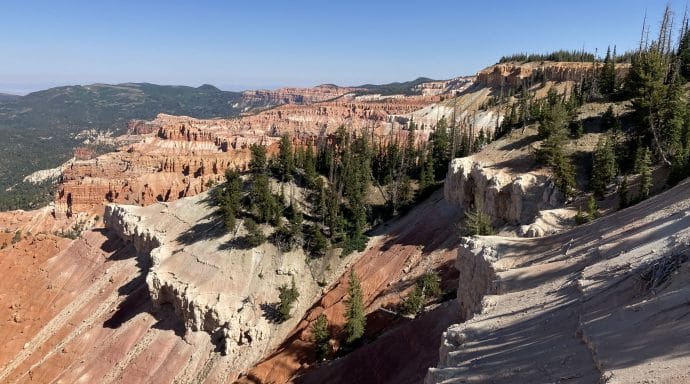
We had never heard of Cedar Breaks National Monument but we saw signs from I-15 as we drove south from Salt Lake City to St George and decided to check it out. Cedar Breaks is about 30 minutes east of Cedar City, Utah. You get there by driving along the Scenic State Route 14, which will also take you east towards Bryce Canyon National Park. The road winds up into the mountains, through beautiful pine forests and on to ancient lava fields. Just before you arrive, you’ll pass a scenic viewpoint of Zion National Park. On a clear day the view here is magnificent and definitely worth a stop.
When you arrive at Cedar Breaks, you’ll first arrive at the Visitors Center, where you can pay the entry fee and obtain park information. The Park Rangers here were very nice and helpful as we had no idea where to start. There is also a small store there and plans to add a larger museum in the future. The boys picked up their Junior Ranger books and also got stamps in their National Park Passports.
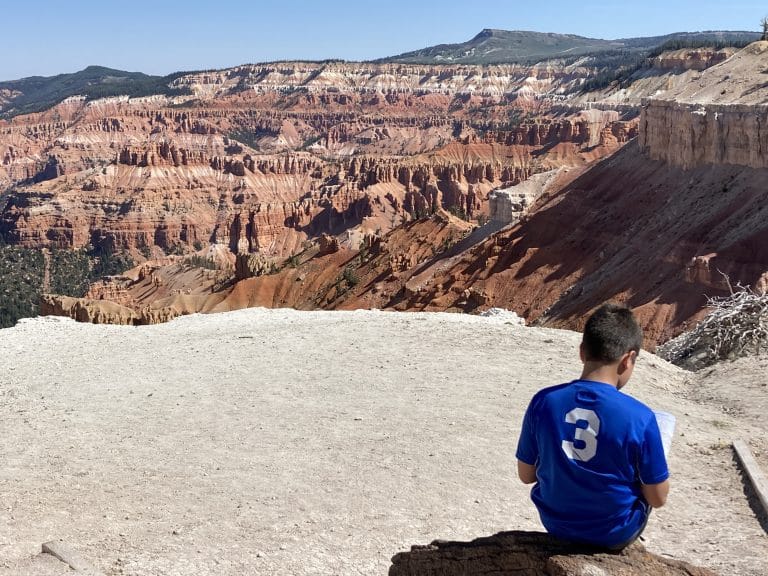
From here, we drove to the first parking area and walked along the South Rim Trail towards the Spectra Point. As soon as we walked up to the amphitheater we were blown away by the view. Looking out into the distance and down below, all you can see are the cliffs and pinnacles created by prehistoric lakes and volcanos that existed here millions of years ago. Earthquakes, wind, rain and erosion have changed the landscape over time and will continue to create new cervices and hoodoos in the future.
We enjoyed looking at the fins, hoodoos and arches in the distance. And we were amazed by the fact that as we continued along the trail the view continued to change. New areas could be seen as we moved. And new viewpoints gave us completely new views. We continued along to the point and stopped at various spots so that the boys could work on their Junior Ranger books while taking in the view.
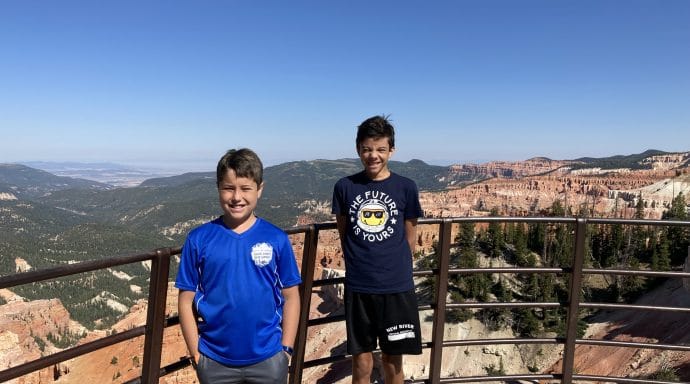
When we returned to the car, we continued driving around the amphitheater to the Chessman Ridge Overlook. This large overlook area is an easy walk from the car and presents another amazing view of the rocks below. You can walk from here along the Alpine Pond Trail to get better views of the rocks below. Make sure to stop at various points along the amphitheater because the view is completely different depending on where you are and you can’t fully appreciate that until you see it from a few different vantage points.
Our trip to Cedar Breaks National Monument was a short one, but one that we all really enjoyed. The hiking was easy and the views were incredible. From here you could continue north around the amphitheater and out to State Route 143, which would take you towards Bryce Canyon National Park or you can return the way you came in. If you’re in the area, I highly recommend making the drive you won’t be sorry you stopped!
Are you planning a trip to Cedar Breaks National Monument?

